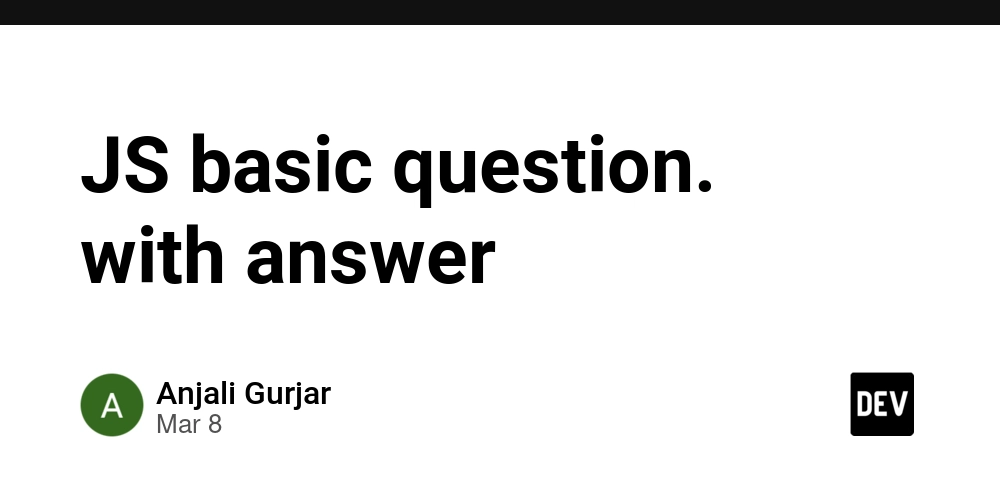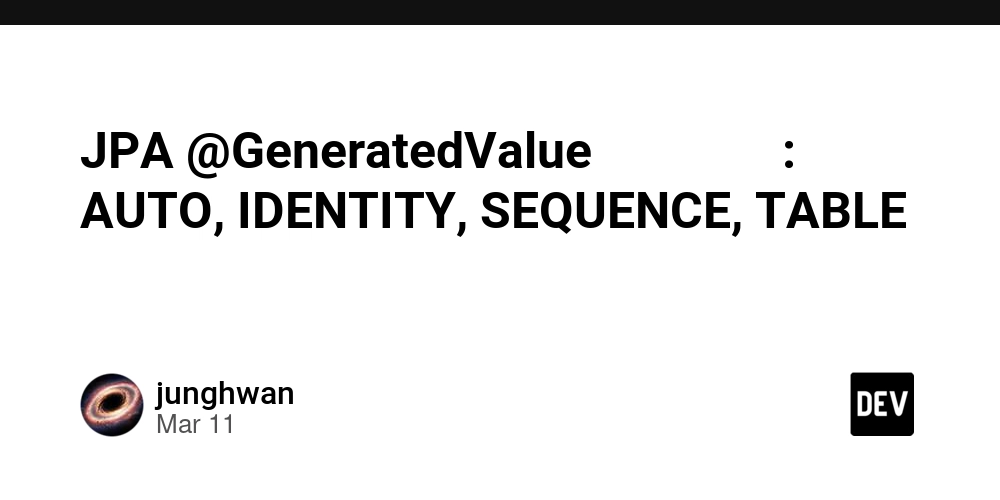JS basic question. with answer
1. Basic Data Types in JavaScript JavaScript has seven primitive data types and one non-primitive type: Primitive Types: Number – Represents both integers and floating-point numbers (e.g., 42, 3.14). String – Represents text (e.g., "Hello", 'World'). Boolean – Represents true or false. Undefined – Represents a variable that has been declared but not assigned a value. Null – Represents the intentional absence of any object value. Symbol (ES6) – Represents a unique identifier. BigInt (ES11) – Represents large integers beyond Number.MAX_SAFE_INTEGER. Non-Primitive Type: Object – Includes arrays, functions, dates, and user-defined objects. 2. Types of Values & Memory Diagram JavaScript values are categorized into two types: Primitive values (stored in Stack Memory) Reference values (Objects) (stored in Heap Memory) Memory Diagram: Stack (Primitive Values) -------------------------------- | name | "John" | | age | 30 | | isMale | true | -------------------------------- Heap (Reference Values) -------------------------------- | obj1 -> { name: "Alice", age: 25 } | | arr -> [1, 2, 3, 4] | -------------------------------- Primitives are stored by value in the stack, while objects are stored in the heap, and variables in the stack store references to the heap memory. 3. Heap vs Stack (Differences & Connection) Feature Stack Heap Definition Memory used for static data like primitives and function calls Memory used for dynamic data like objects Access Speed Fast (Last In First Out - LIFO) Slower than stack Storage Stores primitive values and function execution context Stores reference types (objects, arrays) Memory Management Automatically freed when function ends Requires manual garbage collection Connection: When a reference type (object) is stored in a variable, its address (reference) is stored in the stack, while the actual object resides in the heap. 4. Internal Property [[Class]] [[Class]] is an internal property of JavaScript objects, which is used to determine the type of an object. It can be accessed using Object.prototype.toString.call(value). console.log(Object.prototype.toString.call([])); // [object Array] console.log(Object.prototype.toString.call({})); // [object Object] console.log(Object.prototype.toString.call(null)); // [object Null] 5. Built-in Objects in JavaScript JavaScript provides several built-in objects, including: Global Objects: Object, Function, Array, Boolean, Number, String, BigInt, Symbol, Date, RegExp, Error Math & Utility Objects: Math, JSON Typed Arrays: Int8Array, Uint8Array, Float32Array, etc. Asynchronous Handling: Promise, AsyncFunction DOM & BOM Objects (Browser-specific): window, document, console 6. Difference between undefined and undeclared Feature undefined undeclared Definition A declared variable without a value A variable that has never been declared Example let x; console.log(x); // undefined console.log(y); // ReferenceError: y is not defined Type undefined ReferenceError (runtime error) 7. Difference between null and undefined Feature null undefined Definition Represents intentional absence of value Represents an uninitialized variable Type object undefined Use Case Used when no value is explicitly assigned Default value for uninitialized variables Example let x = null; let y; console.log(y); // undefined 8. How to Get a Safe undefined Value? Use void 0 to get undefined safely: let x = void 0; console.log(x); // undefined Simply declare a variable without assigning a value: let y; console.log(y); // undefined Use typeof check to avoid errors: if (typeof someVariable === "undefined") { console.log("Variable is undefined"); } 9. Basic Rules for Writing JavaScript Use let and const instead of var let and const provide block-scoped variables and prevent hoisting issues. let name = "John"; const age = 30; Use Strict Mode ("use strict") Helps catch errors early by preventing the use of undeclared variables. "use strict"; let x = 10; // Correct y = 20; // Error: y is not defined Always use === instead of == Avoids type coercion issues. console.log(1 == "1"); // true (bad) console.log(1 === "1"); // false (good) Avoid Global Variables Always declare variables inside functions or modules to prevent global scope pollution. Use Template Literals for String Concatenation let name = "Alice"; console.log(`Hello, ${name}!`); // Good Use Arrow Functions (=>) for Shorter Syntax const add = (a, b) => a + b; Handle Errors with try...catch try { let result = someUndefinedFunction(); } catch (error) { console.erro

1. Basic Data Types in JavaScript
JavaScript has seven primitive data types and one non-primitive type:
-
Primitive Types:
-
Number– Represents both integers and floating-point numbers (e.g.,42,3.14). -
String– Represents text (e.g.,"Hello",'World'). -
Boolean– Representstrueorfalse. -
Undefined– Represents a variable that has been declared but not assigned a value. -
Null– Represents the intentional absence of any object value. -
Symbol(ES6) – Represents a unique identifier. -
BigInt(ES11) – Represents large integers beyondNumber.MAX_SAFE_INTEGER.
-
-
Non-Primitive Type:
-
Object– Includes arrays, functions, dates, and user-defined objects.
-
2. Types of Values & Memory Diagram
JavaScript values are categorized into two types:
- Primitive values (stored in Stack Memory)
- Reference values (Objects) (stored in Heap Memory)
Memory Diagram:
Stack (Primitive Values)
--------------------------------
| name | "John" |
| age | 30 |
| isMale | true |
--------------------------------
Heap (Reference Values)
--------------------------------
| obj1 -> { name: "Alice", age: 25 } |
| arr -> [1, 2, 3, 4] |
--------------------------------
Primitives are stored by value in the stack, while objects are stored in the heap, and variables in the stack store references to the heap memory.
3. Heap vs Stack (Differences & Connection)
| Feature | Stack | Heap |
|---|---|---|
| Definition | Memory used for static data like primitives and function calls | Memory used for dynamic data like objects |
| Access Speed | Fast (Last In First Out - LIFO) | Slower than stack |
| Storage | Stores primitive values and function execution context | Stores reference types (objects, arrays) |
| Memory Management | Automatically freed when function ends | Requires manual garbage collection |
Connection: When a reference type (object) is stored in a variable, its address (reference) is stored in the stack, while the actual object resides in the heap.
4. Internal Property [[Class]]
-
[[Class]]is an internal property of JavaScript objects, which is used to determine the type of an object. - It can be accessed using
Object.prototype.toString.call(value).
console.log(Object.prototype.toString.call([])); // [object Array]
console.log(Object.prototype.toString.call({})); // [object Object]
console.log(Object.prototype.toString.call(null)); // [object Null]
5. Built-in Objects in JavaScript
JavaScript provides several built-in objects, including:
-
Global Objects:
Object,Function,Array,Boolean,Number,String,BigInt,Symbol,Date,RegExp,Error -
Math & Utility Objects:
Math,JSON -
Typed Arrays:
Int8Array,Uint8Array,Float32Array, etc. -
Asynchronous Handling:
Promise,AsyncFunction -
DOM & BOM Objects (Browser-specific):
window,document,console
6. Difference between undefined and undeclared
| Feature | undefined |
undeclared |
|---|---|---|
| Definition | A declared variable without a value | A variable that has never been declared |
| Example | let x; console.log(x); // undefined |
console.log(y); // ReferenceError: y is not defined |
| Type | undefined |
ReferenceError (runtime error) |
7. Difference between null and undefined
| Feature | null |
undefined |
|---|---|---|
| Definition | Represents intentional absence of value | Represents an uninitialized variable |
| Type | object |
undefined |
| Use Case | Used when no value is explicitly assigned | Default value for uninitialized variables |
| Example | let x = null; |
let y; console.log(y); // undefined |
8. How to Get a Safe undefined Value?
- Use
void 0to getundefinedsafely:
let x = void 0;
console.log(x); // undefined
- Simply declare a variable without assigning a value:
let y;
console.log(y); // undefined
- Use
typeofcheck to avoid errors:
if (typeof someVariable === "undefined") {
console.log("Variable is undefined");
}
9. Basic Rules for Writing JavaScript
-
Use
letandconstinstead ofvar-
letandconstprovide block-scoped variables and prevent hoisting issues.
-
let name = "John";
const age = 30;
-
Use Strict Mode (
"use strict")- Helps catch errors early by preventing the use of undeclared variables.
"use strict";
let x = 10; // Correct
y = 20; // Error: y is not defined
-
Always use
===instead of==- Avoids type coercion issues.
console.log(1 == "1"); // true (bad)
console.log(1 === "1"); // false (good)
-
Avoid Global Variables
- Always declare variables inside functions or modules to prevent global scope pollution.
Use Template Literals for String Concatenation
let name = "Alice";
console.log(`Hello, ${name}!`); // Good
-
Use Arrow Functions (
=>) for Shorter Syntax
const add = (a, b) => a + b;
-
Handle Errors with
try...catch
try {
let result = someUndefinedFunction();
} catch (error) {
console.error("An error occurred:", error);
}
- Use Destructuring for Cleaner Code
const user = { name: "John", age: 25 };
const { name, age } = user;
- Use Default Parameters in Functions
function greet(name = "Guest") {
console.log(`Hello, ${name}`);
}
-
Optimize Loops with
forEach,map,filter
const numbers = [1, 2, 3];
numbers.map(num => num * 2); // [2, 4, 6]









































































































































































![[The AI Show Episode 142]: ChatGPT’s New Image Generator, Studio Ghibli Craze and Backlash, Gemini 2.5, OpenAI Academy, 4o Updates, Vibe Marketing & xAI Acquires X](https://www.marketingaiinstitute.com/hubfs/ep%20142%20cover.png)


























































































































![[FREE EBOOKS] The Kubernetes Bible, The Ultimate Linux Shell Scripting Guide & Four More Best Selling Titles](https://www.javacodegeeks.com/wp-content/uploads/2012/12/jcg-logo.jpg)



![From drop-out to software architect with Jason Lengstorf [Podcast #167]](https://cdn.hashnode.com/res/hashnode/image/upload/v1743796461357/f3d19cd7-e6f5-4d7c-8bfc-eb974bc8da68.png?#)







































































































.png?#)




.jpg?#)


















 (1).webp?#)













_Christophe_Coat_Alamy.jpg?#)







































































































![Rapidus in Talks With Apple as It Accelerates Toward 2nm Chip Production [Report]](https://www.iclarified.com/images/news/96937/96937/96937-640.jpg)









































































































































